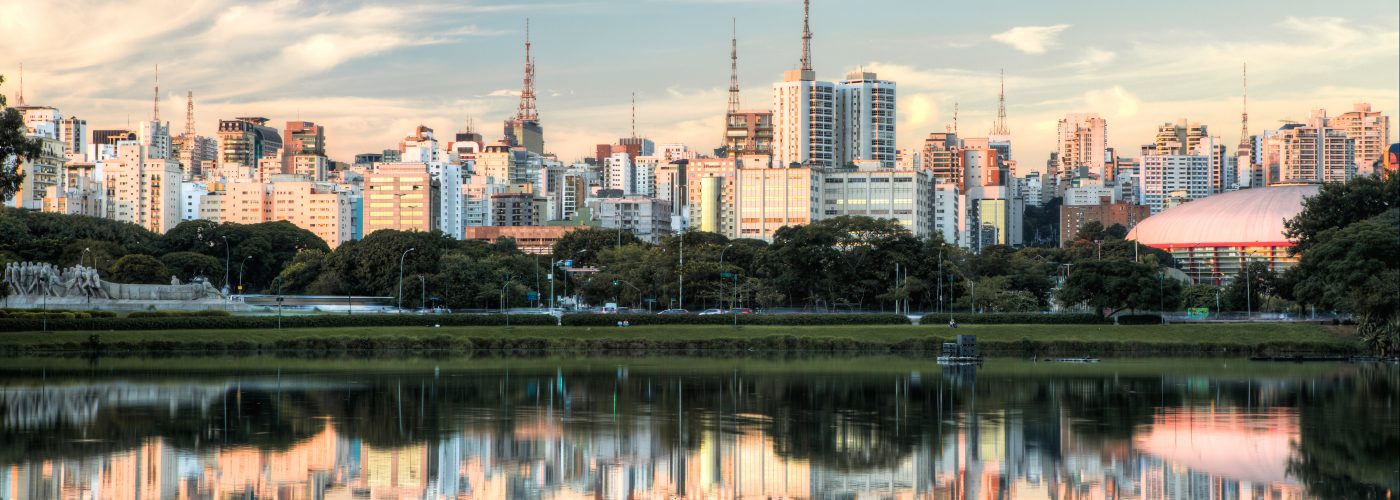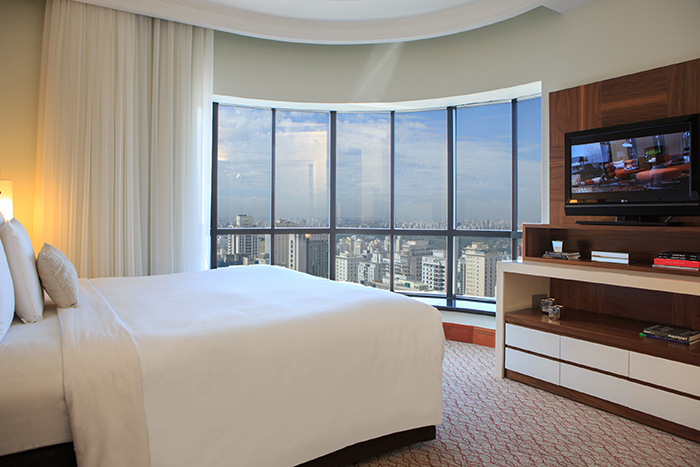Ever since I fell down the Netflix rabbit hole that is Chef’s Table, I’ve had the reluctant dream of eating at a Michelin-star restaurant. I say reluctant because while I’ve become mesmerized by the chefs and destinations on the show, I’ve never had any real desire to pay hundreds of dollars to experience a slew of artfully tiny dishes. For example, a sushi tasting at three-Michelin-star Masa in New York is $595 per person. Experiencing the seasonal menu at Copenhagen’s two-star noma, which was named the best restaurant in the world four times over, starts at $350 per person. And that’s if you can get in.
But that expectation was recently shattered when I ate a five-course meal at TUJU, a Sao Paulo restaurant with not one but two Michelin stars, for less than I’ve paid at many subpar American restaurants: $46.
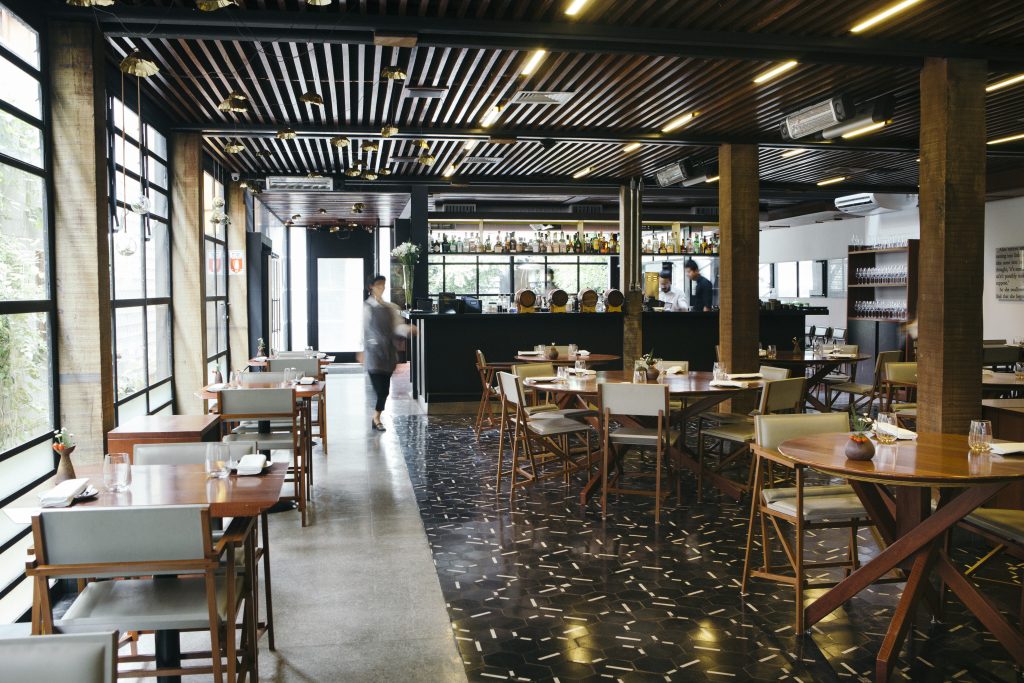
And like most other things that are absurdly affordable in Sao Paulo, a meal at TUJU is no joke. Dishes like citrus-marinated amberjack ceviche with pumpkin shoots, a warm mushroom and egg-yolk soup, steamed white fish in a rich black sesame sauce, and blackened quail in a lentil curry each arrive more beautifully prepared than the last. An extra $25 gets you sommelier-selected wine pairings for each course. TUJU’s new seasonal menu (for Sao Paulo’s high season) currently starts at $95 for the five-course meal option.
Click on the image below to view the interactive version of this story.
In the Lap of Luxury, for Less
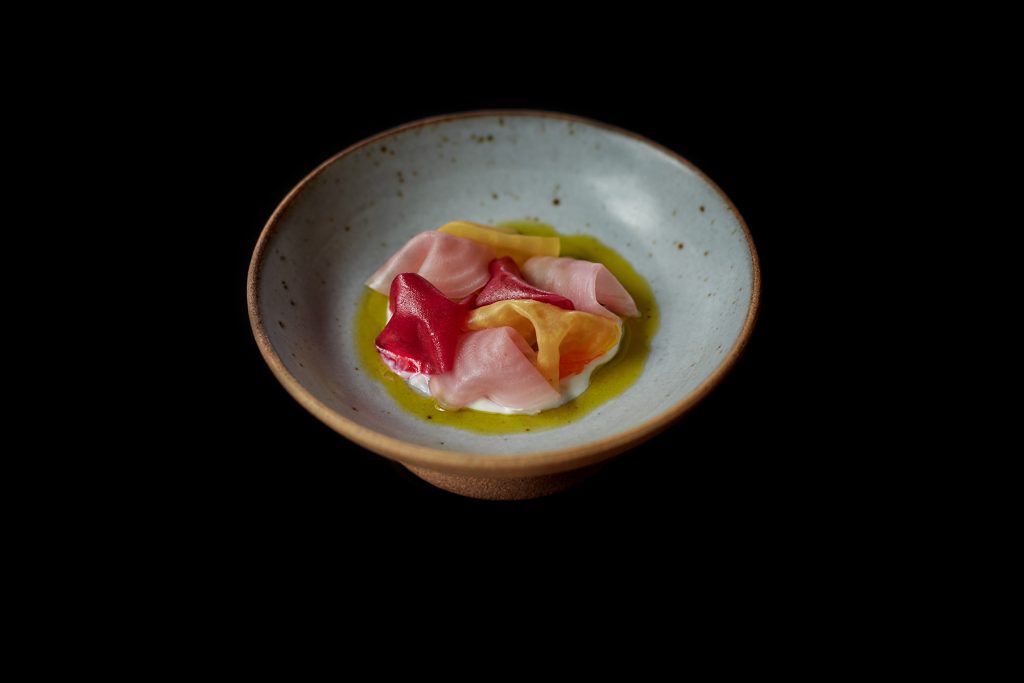
Somewhere between the soup and Instagramming my caramel apple dessert (served as a gel alongside thyme honey ice cream), I realized that splurging in Sao Paulo is anything but, by American standards. And this special brand of ultra-affordable splurging is a necessary part of embracing the cosmopolitan vibe of Sao Paulo, the single largest city in all of the Americas.
Because 58 percent of its international visitors are business travelers, Sao Paulo has a reputation for the finer things. Shopping on Oscar Freire Street, rooftop bars with sparkling skyline views, a lavish arts scene spanning many museums, and, yes, Michelin-star restaurants all make this metropolis a socialite’s paradise. But you don’t have to spend like a socialite to go luxe in the beating heart of Brazil.
New eVisas and Emerging Flights
The key to Brazil’s affordable luxury is, of course, its advantageous three-to-one exchange rate for Americans (see current exchange rates at XE.com). But a 2018 change in visa requirements for Americans (and Canadian, Australian, and Japanese citizens) will also save you money before you even head to Brazil: eVisas are now available online for about $40 and a waiting period of five days. The process applies to both business and leisure visitors, and visas are valid for two years for multiple visits of up to 90 days.
Compared to the hefty $160 fee and in-person consulate appointment previously required to get a Brazilian visa, getting to Brazil is easier and more affordable than it’s ever been. And while you might think of rainforests and Rio beaches when you hear “Brazil,” the best way to introduce yourself to the massive country is to make a stop in the world-class city you’ll almost certainly have to fly through.
Chilean carrier LATAM Airlines expanded its nonstop U.S. routes to Sao Paulo in 2018, with direct flights to Sao Paulo now operating from Boston, Miami, Los Angeles, New York, D.C., and Orlando. The move is creating price competition for all airlines operating U.S.-Brazil routes through Sao Paulo’s massive Guarulhos International Airport. And while Brazil is, of course, colossal, almost every major tourist city—Rio de Janeiro, Porto Alegre, Fortaleza, Brasilia, and more—is just a few hours by plane from Sao Paulo. A weekend here is the best way to break up the journey to any of them.
The World’s Largest Japantown
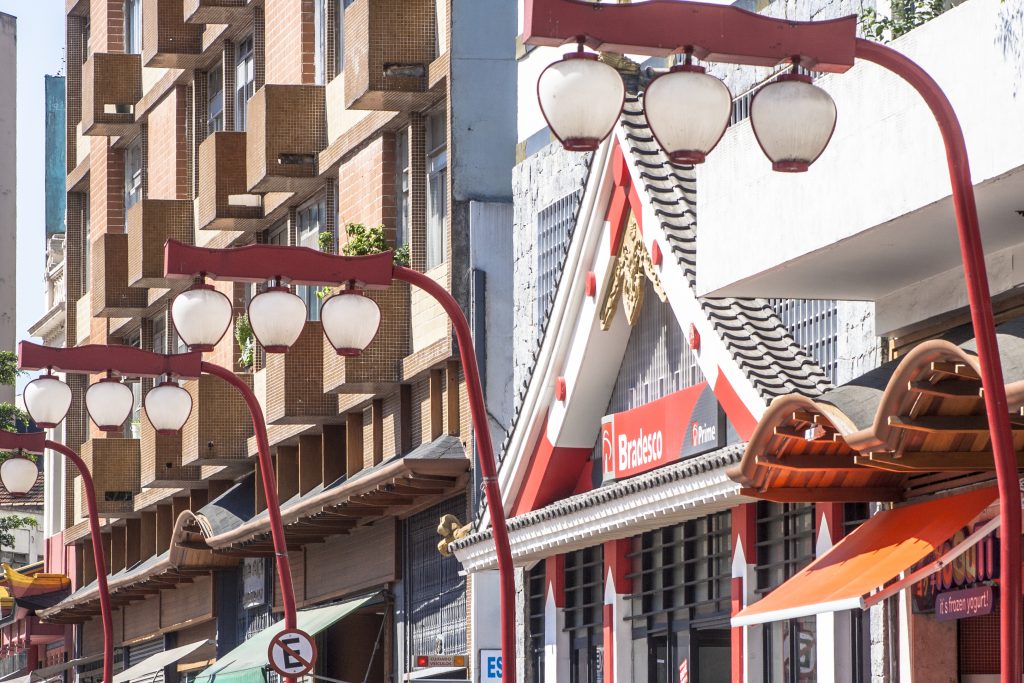
Perhaps the best representation of Sao Paulo’s diversity and culinary prowess is the fact that it’s home to the largest Japanese diaspora in the world outside of Asia. The Liberdade neighborhood offers a taste of Japan in South America with Asian markets, Japanese arches and street art, convenience stores stocked with imported Asian goods, and authentic sushi and ramen restaurants ranging from hole-in-the-wall vendors to high-end eateries. On weekends its outdoor artisan market sells goods like local Japanese art, T-shirts, and jewelry, as well as kitchenware and painted chopsticks. The surprisingly otherworldly enclave is just a few subway stops from both Sao Paulo’s city center and the shopping and food neighborhoods Jardins and Bela Vista.
Bela Vista and Bixiga are another distinct cultural community within Sao Paulo: The Italian populations here make up a Little Italy nestled between the City Center and Paulista Avenue, a main artery closed to traffic on Sundays. The Sao Paulo subway system stretches for 45 miles and is cheap ($1 per ride), clean, and safe. It’s the perfect alternative to sitting in the city’s perpetual traffic jams—though Uber is available if you need it.
True Value in Brazilian Fine Dining

Michelin stars like TUJU Chef Ivan Ralston’s aren’t the only motivation for eating out in Sao Paulo; the city is home to some of the world’s top culinary minds. Celebrity chef and former DJ Alex Atala hails from here, and is credited with introducing the culinary world to Amazonian ingredients to create Brazilian cooking as the world knows it today. His restaurants include two-Michelin-star D.O.M., where hardcore fine diners can try a $250 tasting menu that includes golden Amazonian ants (watch his Chef’s Table episode for the full explanation). Atala was the first Brazilian chef to earn two Michelin stars, but now shares that honor with Ralston of TUJU.
There are also exceptional casual spots in Sao Paulo to try something new, like the innovative pork creations (think pork “sushi” and bacon-caramel desserts) at reservations-free Casa do Porco. Charcoal-kissed vegetables and seafood at Chou, and World’s Best Female Chef 2014 Helena Rizzo’s quintessentially Brazilian ingredients at Mani Manioca (try the open-air patio for a power lunch paired with bright local juices) prove that some of the best food in Sao Paulo is coming from female chefs.
Where to Stay in Sao Paulo
Stay like a business traveler in the affordable sky-high Renaissance Sao Paulo, where suites guarantee a cityscape view plus access to a top-floor business lounge for free hors d’oeuvres, wine, and beer throughout the day. The Renaissance also has an extensive spa offering an array of massages, plus an indoor hot tub and outdoor pool.
Opting to stay near food-renowned neighborhoods in Sao Paulo like Jardins, Vila Madalena, Bela Vista, or Liberdade means you won’t have to sit in traffic as bad as L.A.’s to eat your way through this metropolis. Sao Paulo’s city center is worth visiting during the day for historic sites like Se Cathedral and the Municipal Market, but it’s an area of frequent unrest that makes the neighborhoods south of it popular among business travelers and vacationers. For value in spending a bit more, the sleek Hotel Unique adjacent to Ibirapuera Park, has an ultra-modern spa and pool deck, a sky bar, and whimsical interiors like sloped floors and an indoor pool complete with a modern slide.
Shopping
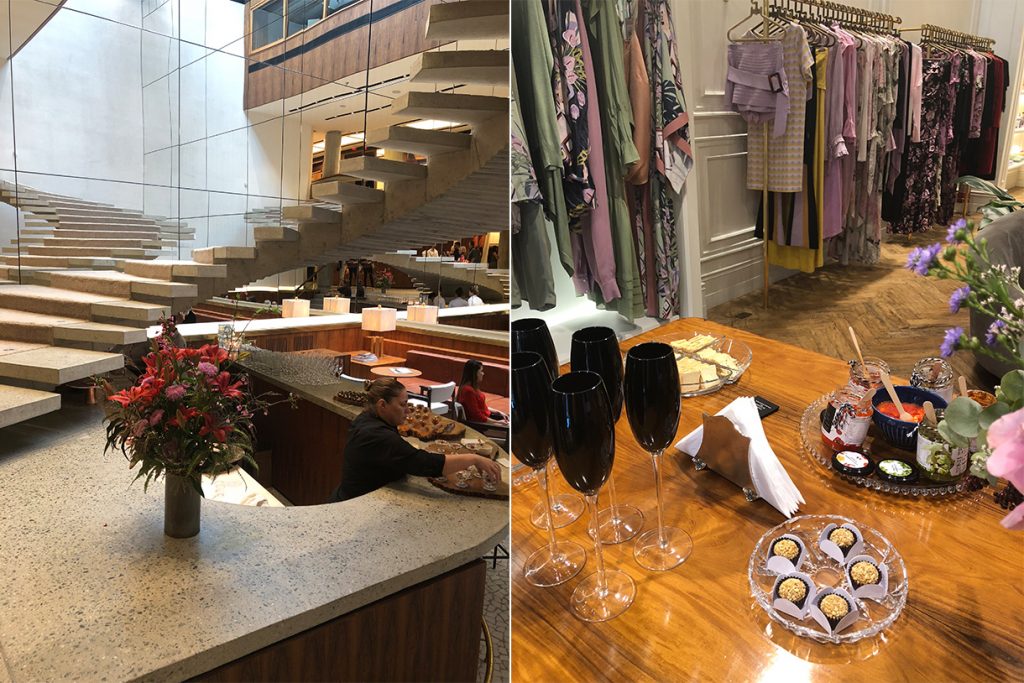
Hotels on famed shopping street Rua Oscar Freire, such as the affordable Regent Park Hotel, give you easy access to all the local designer shops. They’re worth visiting even if you’re not looking to spend anything: Free snacks, impressive interior design, and hidden cafes make the most striking stores worth wandering into, like nk store and the always-changing art and plastic-shoe haven Galeria Melissa. For affordable shopping try Riachuelo for H&M-style value and Havainas flagship store for the Brazilian-Japanese flip flops. But also keep in mind that the pricey luxury goods here are a better deal than they appear: They’ll be a third of what their listed price is when you’re converting to U.S. dollars.
Nightlife
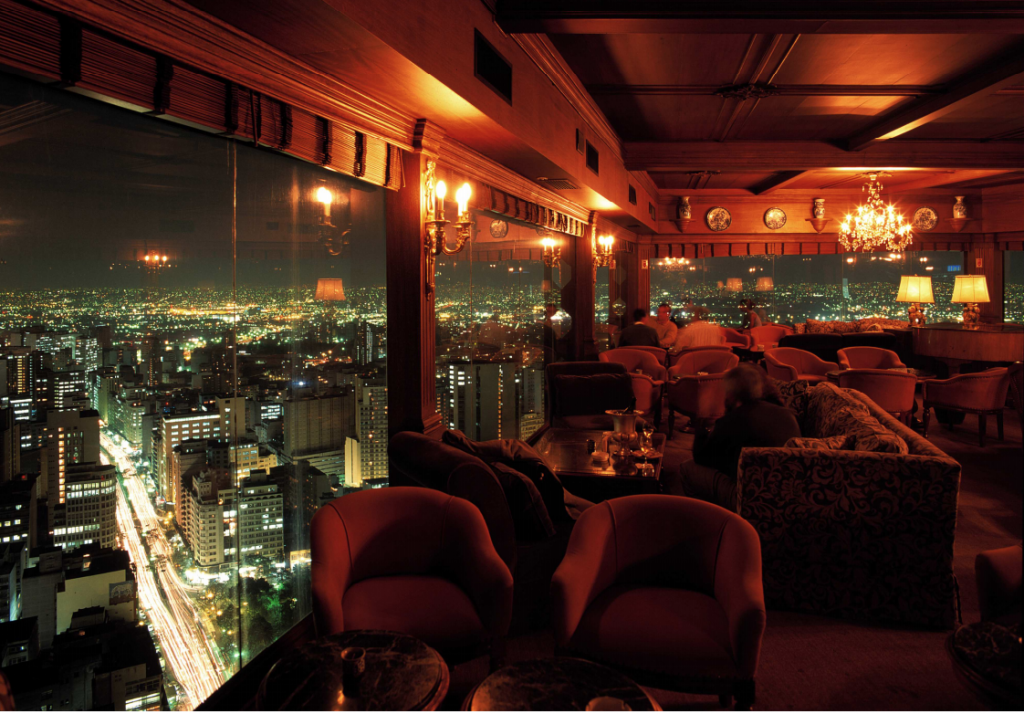
One of the most popular reasons to visit Sao Paulo is its eclectic array of nightlife options, from low-key watering holes to live Brazilian music, along with a vibrant LGBT scene (the annual Pride parade is one of the largest in the world) and sky-high cocktail bars with sparkling views of the seemingly endless urban skyline. Caipirinhas at Terraco Italia’s elegant Terrace Piano Bar (above) are the perfect aperitif (snacks and the view make the mere $8 cover well worth it) to see the city from a cozy armchair 42 stories up.
For live music and churrasco, head to historic Bar Brahma nearby, which has been a watering hole for the city’s musical, political, and academic elite since the 1950s. Vila Madalena is an upscale neighborhood for wine bars, craft beer, art galleries, and trendy eateries. After hours, bars and dance clubs go all night in the Baixo Augusta and Jardins neighborhoods, with cozy options like Guilhotina Bar and MeGusta offering respite from the crowds.
Sao Paulo Art and Free Things to Do
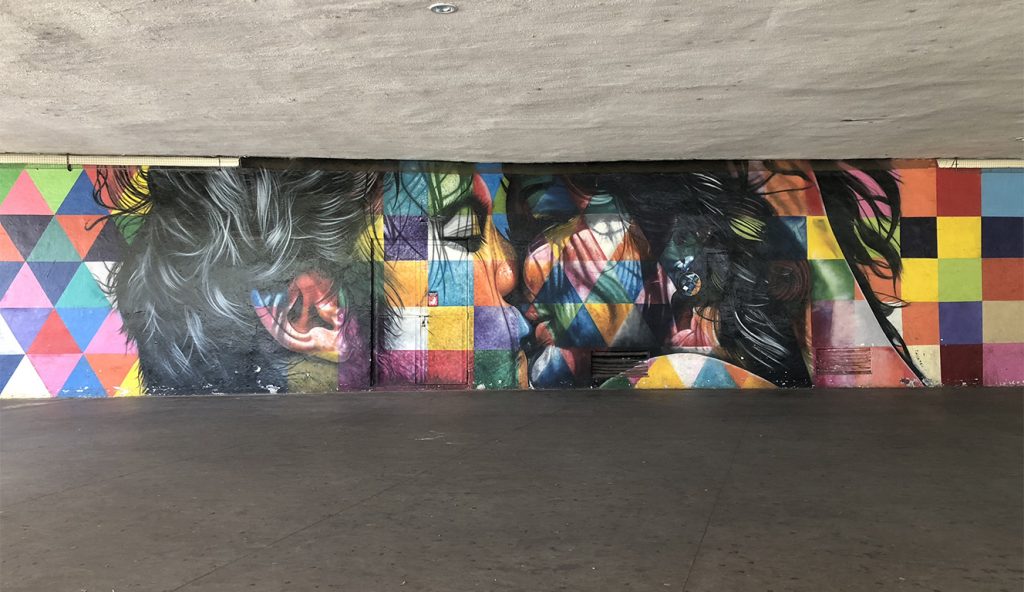
You’ve probably seen the work of famed Brazilian street artists like Eduardo Kobra and Os Gemeos across the globe from Boston to Paris, and on the world stage at the Rio Olympics in 2016. So it might not come as a surprise that perusing street art is one of the best things to do in Sao Paulo. On the sides of massive buildings and on Batman Alley’s thickly painted walls, art is everywhere, and it’s free or cheap to enjoy. One of the best views of the city is also free of charge thanks to the free-admission Museum of Contemporary Art, which has an outdoor observation deck overlooking Ibirapuera Park.
Sao Paulo’s answer to New York’s Central Park, Ibirapuera Park is home to its own world-class museums, like the Sao Paulo Museum of Modern Art, which is free on Saturdays and just $2 the rest of the week. The park is also home to a massive Afro Brazil Museum (also $2 to visit), and Japanese Pavilion with a koi pond and tea house ($3 to visit).
Sao Paulo’s most famous museum is the historic yet modern Sao Paulo Museum of Art (MASP), which sits on Paulista Avenue; admission starts at $4. The main artery of Sao Paulo, Paulista Avenue is closed to traffic on Sundays for live music and vendors—making MASP and its surroundings the place to be on Sunday afternoons. (Editor’s note: All prices are approximate, based on currency exchange rates at the time of publication.)
The boisterous energy of Sao Paulo is best felt in its finest, yet surprisingly affordable, art and entertainment institutions—and they’re beckoning to Americans now more than ever.
[viator_tour destination=”79″ type=”3-mod”]
More from SmarterTravel:
- Brazilian Beaches for Every Personality
- New Airlines to Watch for Cheap Flights
- Brazil’s Kitesurfing Paradise
SmarterTravel Editor Shannon McMahon visited Sao Paulo as a guest of LATAM Airlines and Embratur, Brazil’s tourism board. Follow her on Instagram: @shanmcmahon.
We hand-pick everything we recommend and select items through testing and reviews. Some products are sent to us free of charge with no incentive to offer a favorable review. We offer our unbiased opinions and do not accept compensation to review products. All items are in stock and prices are accurate at the time of publication. If you buy something through our links, we may earn a commission.
Related
Top Fares From
Today's Top Travel Deals
Brought to you by ShermansTravel
4-Night Grand Canyon & Las Vegas...
Great Value Vacations
 vacation
$772+
vacation
$772+
Greek Isles: Luxe Last-Minute, 7-Nt, All-Incl....
Regent Seven Seas Cruises
 cruise
$8599+
cruise
$8599+
Asia: Business Class Round-Trip Flights to...
Business-Class
 Airfare
$2249+
Airfare
$2249+
